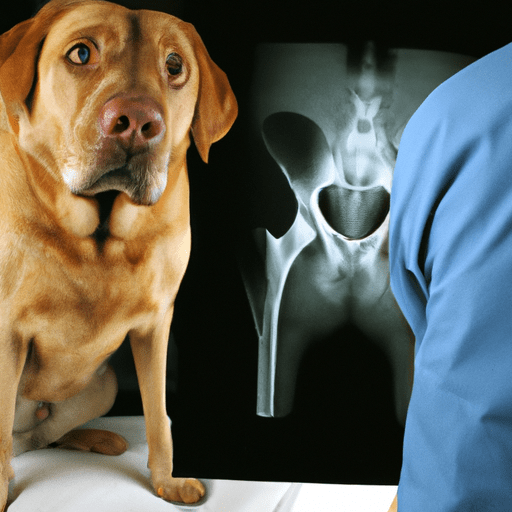As a caregiver to your beloved pet, it’s crucial to understand potential health issues that can affect your dog’s quality of life. One common condition, hip dysplasia, affects many dogs across breeds and ages. This article will guide you on how to diagnose hip dysplasia in dogs, steps to take if your dog has this condition, and ways to improve their quality of life.
Contents
- Understanding Hip Dysplasia
- Signs of Hip Dysplasia
- Diagnostic Procedures
- Treatment Options
- Frequently Asked Questions
Key Takeaways
- Hip dysplasia is a common skeletal condition in dogs, particularly in larger breeds.
- Early detection can help manage the condition and improve your dog’s quality of life.
- Regular vet check-ups and being aware of the signs can aid in early diagnosis.
Understanding Hip Dysplasia
Hip dysplasia is a genetic disorder that largely affects larger breeds but can occur in dogs of all sizes. It’s a condition where the hip joint doesn’t fit together properly, causing pain and mobility issues as the dog ages. This disorder can significantly impact your dog’s quality of life, making it vital to understand its signs and symptoms. For more in-depth information about hip dysplasia, you can visit this reliable source.
Signs of Hip Dysplasia
Being observant of your dog’s behavior can help detect hip dysplasia early. Some common signs include:
- Difficulty standing up or sitting down
- Decreased activity or reluctance to run, jump, or climb stairs
- Noticeable pain or discomfort during or after exercise
- A swaying gait or bunny hopping
- Stiffness or decreased range of motion in the hind legs
It’s important to remember that symptoms vary between dogs and can be influenced by factors such as age, weight, and physical condition. To understand more about these signs and symptoms, OneTopDog offers a great article you might find helpful.
Diagnostic Procedures
After observing signs of hip dysplasia, it’s essential to consult with your vet. They will likely begin with a physical examination, followed by diagnostic procedures such as:
- A complete medical history of your dog
- Orthopedic examination
- X-rays
These procedures provide a more accurate diagnosis, enabling the vet to spot any abnormalities in the hip joint. For more details on these diagnostic procedures, check out this article.
Treatment Options
The treatment for hip dysplasia in dogs can be medical or surgical, depending on the severity of the condition. Some common treatment options include:
- Weight management to reduce stress on the hip joints
- Physical therapy to improve mobility
- Medication to reduce pain and inflammation
- Surgery, in severe cases
It’s important to consult with your vet to determine the best treatment options for your dog. You can also find additional resources on this topic on OneTopDog.
Frequently Asked Questions
1. Can hip dysplasia be prevented in dogs?
Hip dysplasia is largely genetic, but steps can be taken to minimize its impact. Proper nutrition, regular exercise, and maintaining a healthy weight can all help prevent this condition.
2. Can a dog live a normal life with hip dysplasia?
With proper management and treatment, many dogs with hip dysplasia can live a comfortable life. Regular vet check-ups and treatments such as physical therapy, medication, and, in severe cases, surgery, can significantly improve a dog’s quality of life.
3. What is the best food for a dog with hip dysplasia?
A diet rich in omega-3 fatty acids can help reduce inflammation associated with hip dysplasia. Your vet can provide a suitable diet plan for your dog.
Remember, as a caregiver to your furry friend, understanding potential health conditions like hip dysplasia can help ensure they live a happy, healthy life. Always consult with your vet for accurate diagnosis and treatment options. For more pet care tips, visit OneTopDog.



